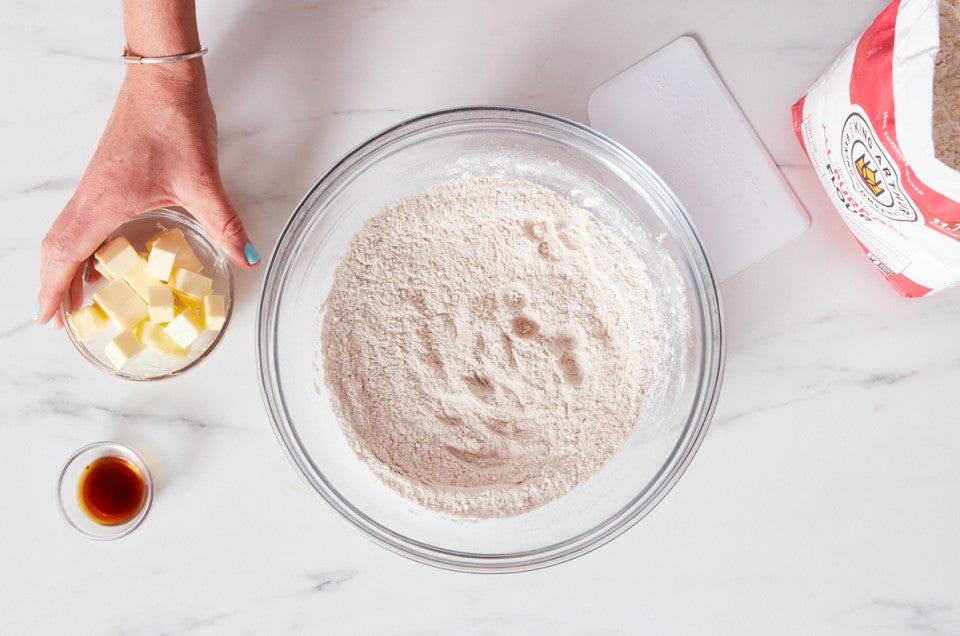Hard vs. soft wheat: What’s the difference?
It all comes down to gluten-forming protein content.


There are several ways to categorize wheat, including its growing season (winter or spring) and its color (white or red). But one of the variables that has the most impact on your baking is “hardness” — based on this factor, wheat is categorized as either hard or soft. But what exactly does that mean? Read on.
Please note: The protein percentages and wheat varieties listed for certain types of flour in this post are what we here at King Arthur guarantee. Other brands may differ.

In the United States, there are two primary types of wheat grown: hard and soft. The hard wheat category includes hard red winter wheat, hard red spring wheat, hard white wheat, and durum. Hard wheats are high-protein wheats (typically between 10 and 14 percent protein). The higher the amount of protein, the more gluten the flour can form; the more gluten, the stronger the flour. So a flour milled from hard wheat, with its higher protein content, is better for strong doughs like bread, in which you want to develop a robust gluten network.
By contrast, soft wheats, a category that includes soft red winter and soft white wheats, have a larger percentage of carbohydrates and less proteins than hard wheats, and thus flour milled from soft wheat berries has less gluten-forming abilities. Though these flours lack the protein necessary for producing a strong dough, they are ideal for baked goods where tenderness and a more delicate crumb are desired.
(Learn more: Protein percentage in flour: Why it matters.)
Bread flour, all-purpose flour, whole wheat flour, and white whole wheat flour are all milled from hard wheats. Among them, whole wheat flour has the highest protein (13.2%), with bread flour coming in at 12.7%, white whole wheat following at 12.2%, and all-purpose bringing up the rear with 11.7% protein. Any of these varieties of flour are well suited to bread making, though the lower protein level of all-purpose flour makes it as versatile as its name suggests. (One note: Though whole wheat flours have a high protein content, the wheat bran and germ present can have some effect on gluten formation; learn more here.)
Flours milled from soft wheat include our self-rising flour (8.5%), pastry flour (8%), and Italian-style flour (8.5%). The lower protein levels of these soft wheat flours mean they have less gluten-forming potential. That would be a negative if you tried to use them to make a loaf of bread, but it’s great for biscuits, scones, and cakes.

Some flours take advantage of the properties of both hard and soft wheats by blending the two. Our '00' pizza flour (11.5%), which includes hard wheat (for strength in the dough) and soft wheat (which makes the pizza dough easier to shape), gives you the best of both worlds (and can be a secret ingredient in some cakes, too!).
To summarize:
| Type of flour | Protein percentage | Type of wheat |
| All-purpose flour | 11.7% | Hard wheat |
| Bread flour | 12.7% | Hard wheat |
| Whole wheat flour | 13.2% | Hard wheat |
| Self-rising flour | 8.5% | Soft wheat |
| Pastry flour | 8% | Soft wheat |
| '00' pizza flour | 11.5% | Blend of soft and hard wheat |
Whether you’re looking for a flour for bread or one that’s best suited for scones, King Arthur flours are milled to rigorous standards, ensuring that the flour remains consistent from bag to bag, season to season. All you need to do is pick a recipe, grab a bag of the specified flour, and get mixing.
Dive even deeper into flour:
Cover photo by Rick Holbrook; food styling by Kaitlin Wayne.

